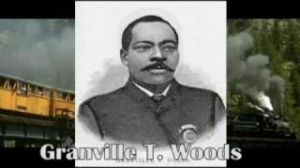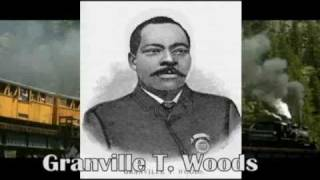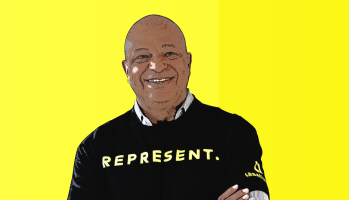 Granville Woods was born on April 23, 1856 in Columbus, Ohio. He spent his early years attending school until the age of 10 at which point he began working in a machine shop repairing railroad equipment and machinery. Intrigued by the electricity that powered the machinery, Woods studied other machine workers as they attended to different pieces of equipment and paid other workers to sit down and explain electrical concepts to him.
Granville Woods was born on April 23, 1856 in Columbus, Ohio. He spent his early years attending school until the age of 10 at which point he began working in a machine shop repairing railroad equipment and machinery. Intrigued by the electricity that powered the machinery, Woods studied other machine workers as they attended to different pieces of equipment and paid other workers to sit down and explain electrical concepts to him.
Over the next few years, Woods moved around the country working on railroads and in steel rolling mills. This experience helped to prepare him for a formal education studying engineering although he never received a degree. After two years of studying, Woods obtained a job as an engineer on a British steamship called the Ironsides. Two years later he obtained employment with D & S Railroads, driving a steam locomotive. Unfortunately, despite his high aptitude and valuable education and expertise, Woods was denied opportunities and promotions.
Out of frustration and a desire to promote his abilities, Woods, along with his brother, formed the Woods Railway Telegraph Company in 1884. The company manufactured and sold telephone, telegraph and electrical equipment. In 1885, Woods patented an apparatus which was a combination of a telephone and a telegraph. The device, which he called “telegraphony,” would allow a telegraph station to send voice and telegraph messages over a single wire. The device was so successful that he later sold it to the American Bell Telephone Company.
In 1887, Woods developed his most important invention to date – a device he called Synchronous Multiplex Railway Telegraph. A variation of the “induction telegraph,” it allowed for messages to be sent from moving trains and railway stations. By allowing dispatchers to know the location of each train, it provided for greater safety and a decrease in railway accidents.
Other inventors made claims to his devices, including Thomas Edison. Woods was twice successful in defending himself against Edison’s claims proving that there were no other devices upon which he could have depended or relied upon to make his device. After the second defeat, Edison decided that it would be better to work with Woods than against him and thus offered him a position with the Edison Company. Over the course of his life Woods would obtain more than 50 patents and sell a number of his devices to such giants as Westinghouse, General Electric and American Engineering.















